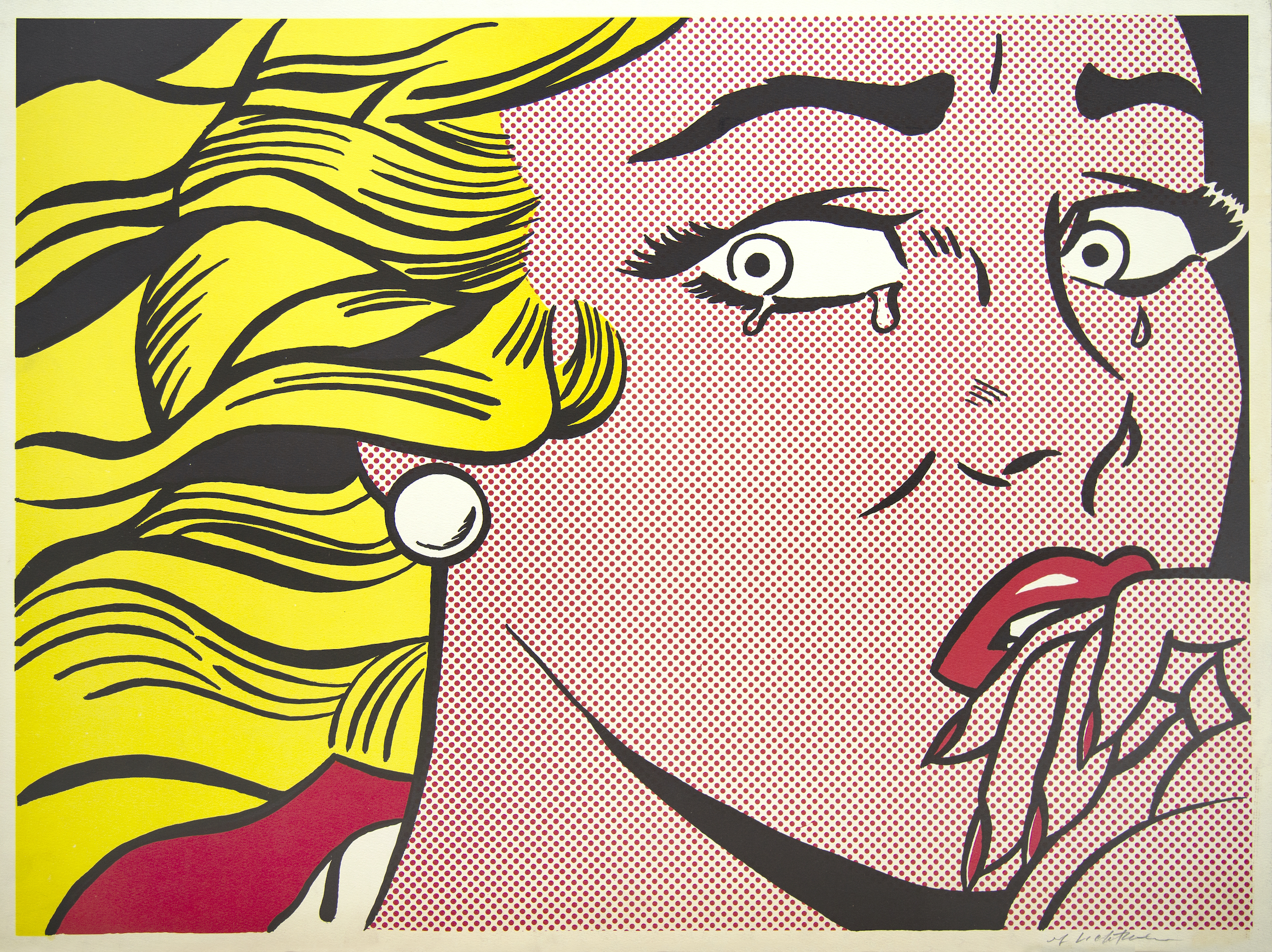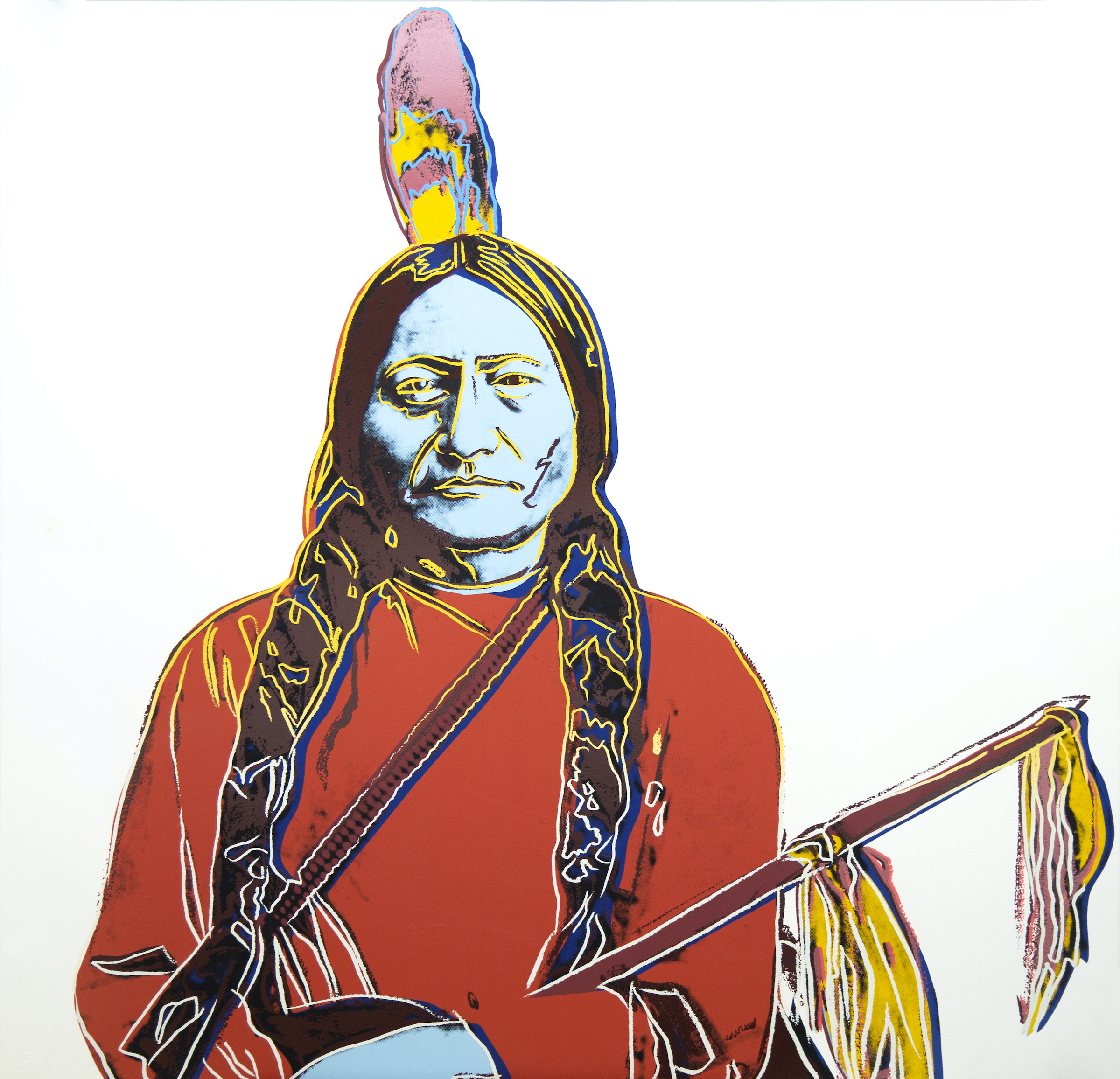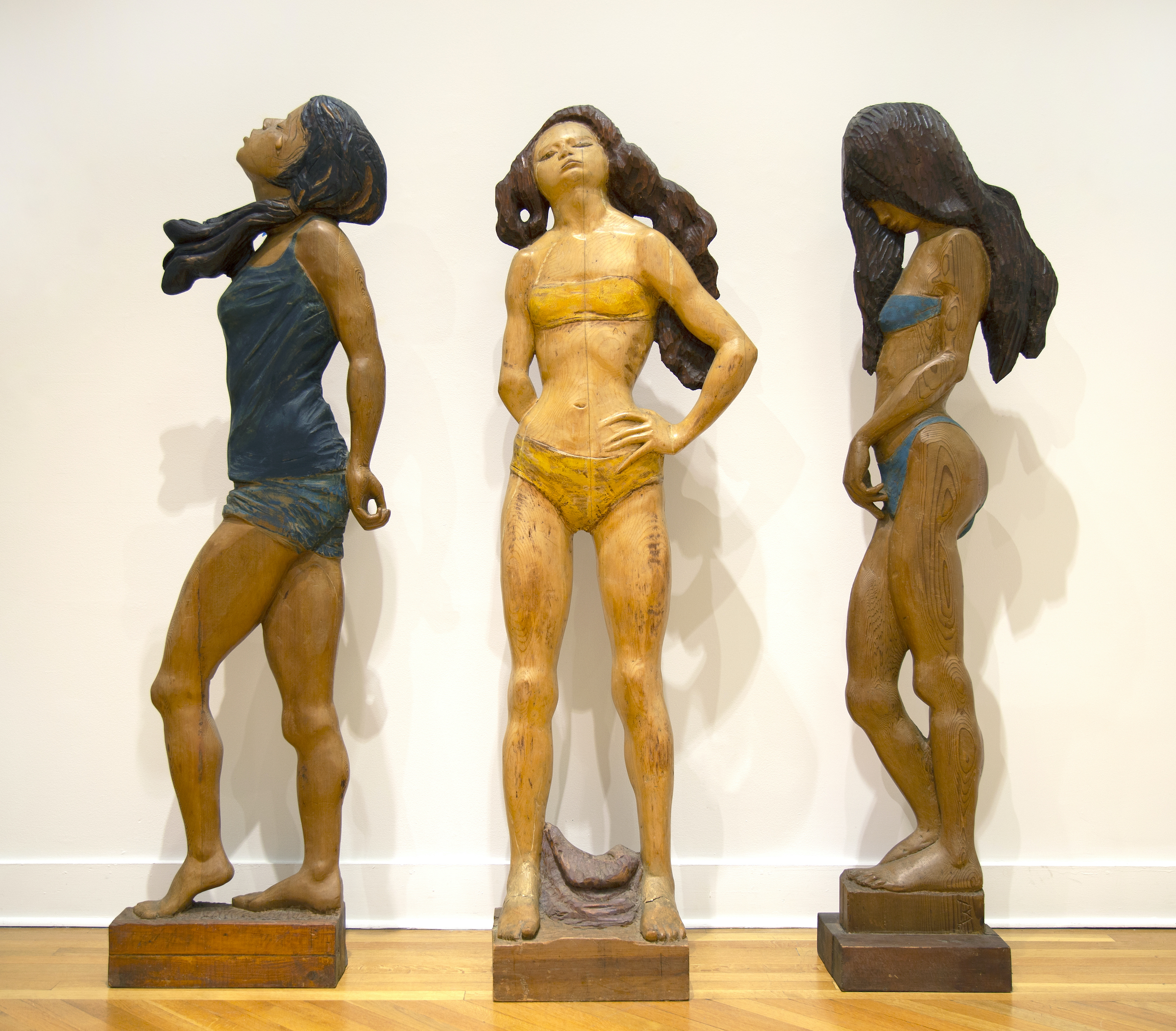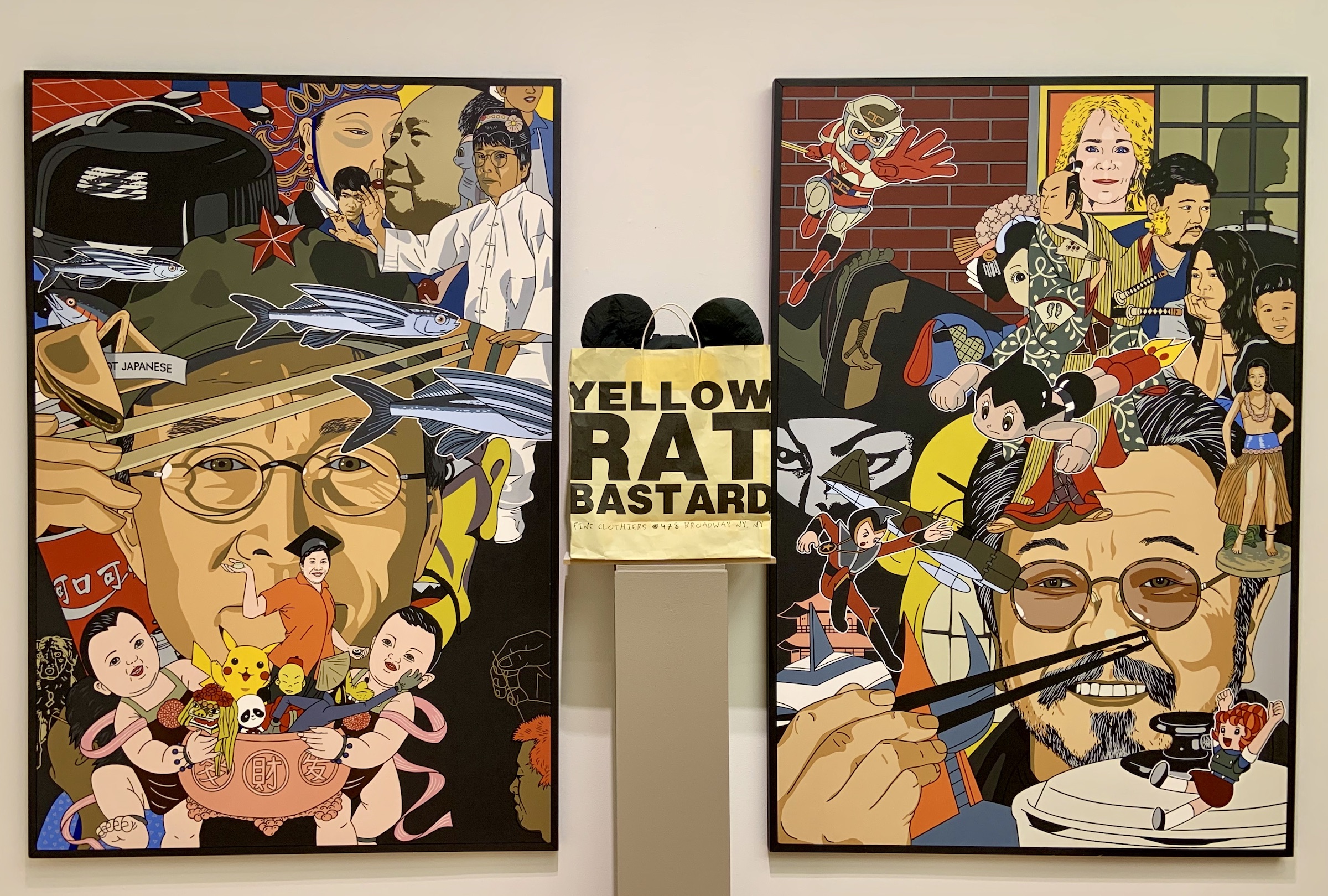The term “Pop Art” was coined by British art critic and author Lawrence Alloway in the mid to late 1950s. Inspired by the work of Richard Hamilton and Eduardo Paolozzi in the UK and Johns, Warhol, Rauschenberg, and Lichtenstein in the US, Alloway saw new art influenced by popular culture, mass marketing, and mechanical reproduction, created in opposition to the painterly romanticism of Abstract Expressionism. Works by Lichtenstein, Warhol, and Perle share familiar subjects often marked by their commonality or everyday nature.
Roy Lichtenstein | Andy Warhol | Barbara Phillips Perle | Roger Shimomura
Roy Lichstein
Crying Girl, 1963
Serigraph
Unknown donor, 2011.8.3
Andy Warhol
Cowboys and Indians: Sitting Bull, 1986
Serigraph
Gift of the Andy Warhol Foundation for the Visual Arts, 2014.4.7
Barbara Phillips Perle
Girls, 1971
Wood and pigment
Gift of George Perle, 78.5.2; 78.6.2; 78.7.2
Roger Shimomura
Yellow Rat Bastard (How to Tell the Difference Between Chinese and Japanese depicting Norman Gee; How to Tell the Difference Between Chinese and Japanese depicting Roger Shimomura), 2000
Acrylic on canvas, paper bag, Mickey Mouse pillow
Gift of Don Brownstein, 2018.1.1- 3
Roger Shimomura’s art has been informed by his incarceration as a young child in Minidoka (Idaho), one of ten internment camps for Japanese-Americans during WWII. Highly relevant for today’s conversations about the government’s incarceration and separation of migrating children from their parents, Shimomura’s world view was forged in conflict, exclusion, and the annexation of the “other.” Working in painting, printmaking, and theatre, his works address sociopolitical issues of ethnicity and identity.
Yellow Rat Bastard, 2000, is a complex diptych with multiple painted and real elements. Over the years, Shimomura, a third generation Japanese-American, has amassed a significant collection of objects and ephemera illustrating stereotypes of Japanese people which the artist mines for inspiration including a 1940s TIME magazine article titled, “How to Tell the Difference Between the Chinese and the Japanese.” Illustrated on the left panel is a former colleague at the University of Kansas, Norman Gee, a San Francisco-born Chinese-American, and Shimomura on the right panel. Influenced by Pop Art and cartooning, each is surrounded by figures and objects of mass culture that identify their own ancestries. The artist states, “the defining moment in each painting is the fact that Norman is holding a pair of Chinese chopsticks with a long-grain kernel of rice, and I’m holding a pair of Japanese chopsticks with a short-grain kernel of rice. Chinese eat long-grain rice, and Japanese eat short-grain rice.”1
In the center of the two painted panels is a shopping bag from the lower Manhattan clothing store, “Yellow Rat Bastard,” which holds an oversized cloth head of Mickey Mouse. Shimomura frets over the use of a 1940s stereotype for Japanese people that perpetuates ignorance and racism today. By bringing these issues into the light, his work can help create a conversation about cultural differences and inclusion.
1Roger Shimomura, “Been There, Got the T-Shirt,” https://www.thepitchkc.com/author/thersa-bembnister/, December 23, 2003
Images by Jacqui Hopely Monkell




